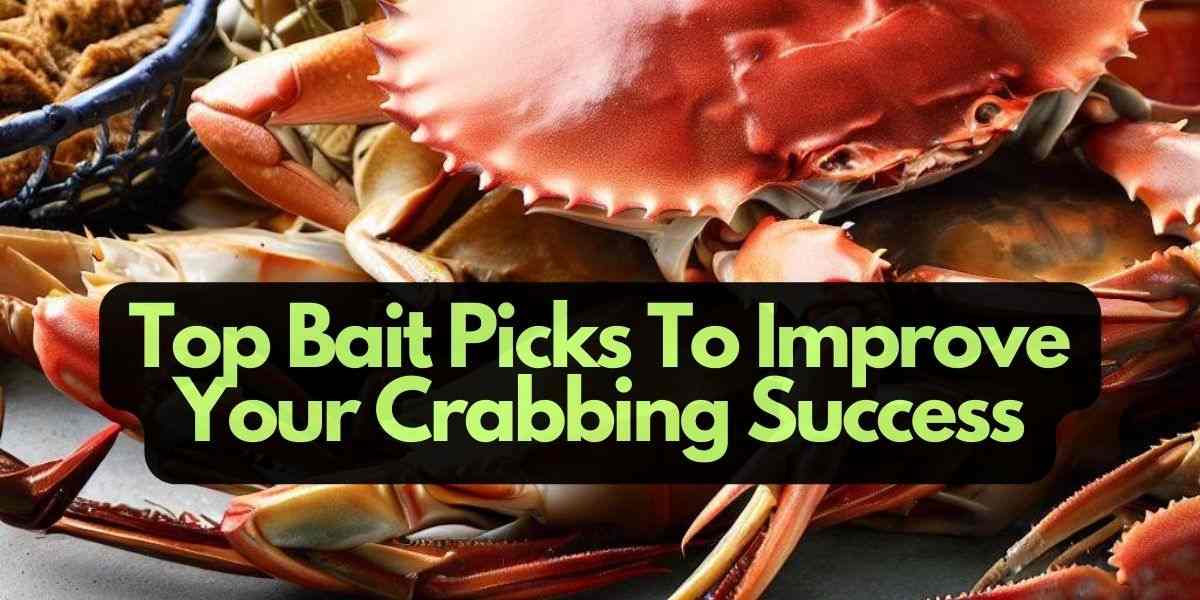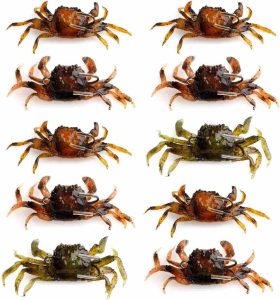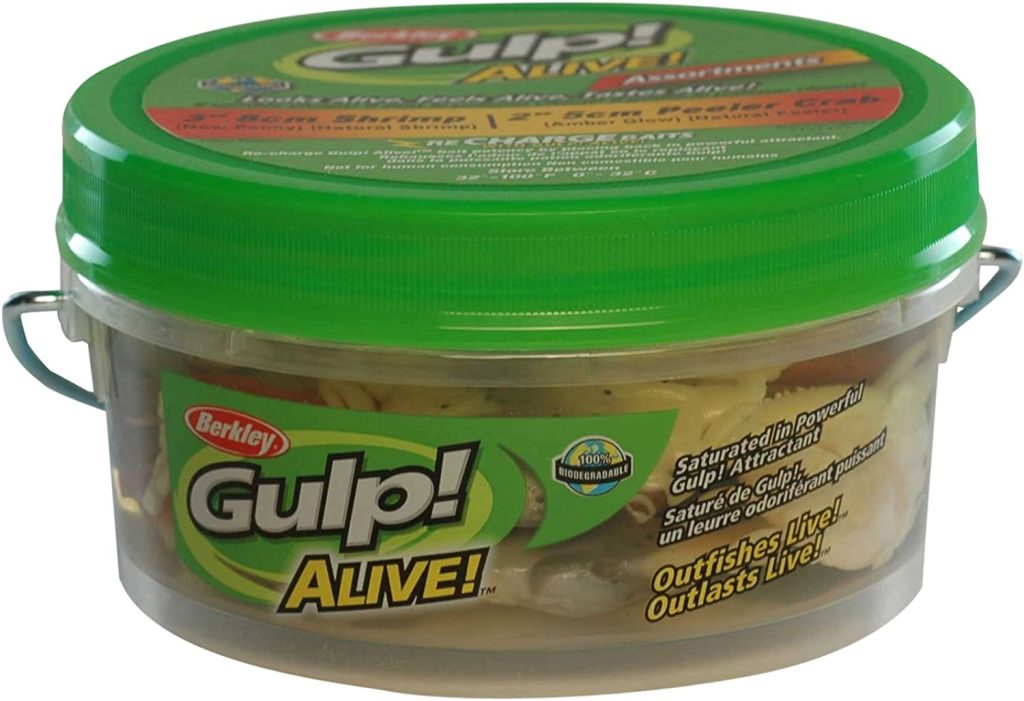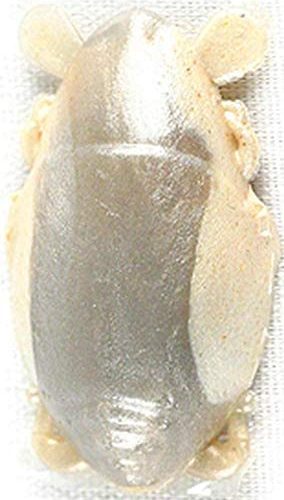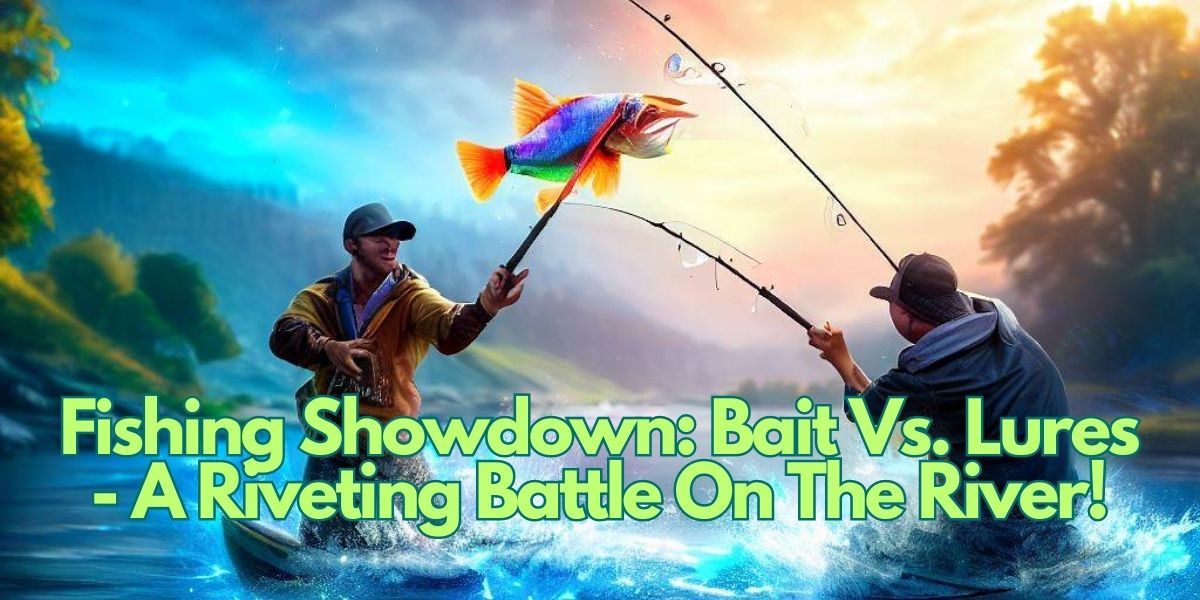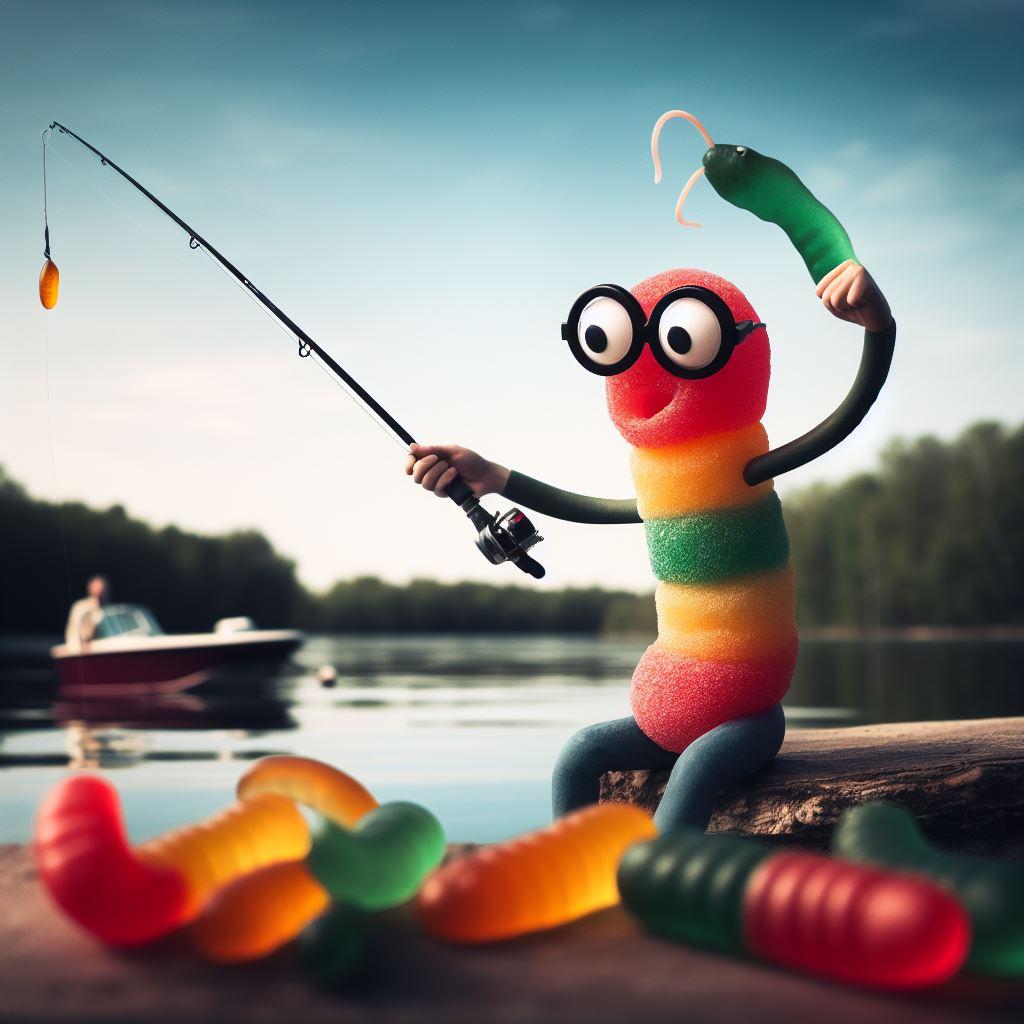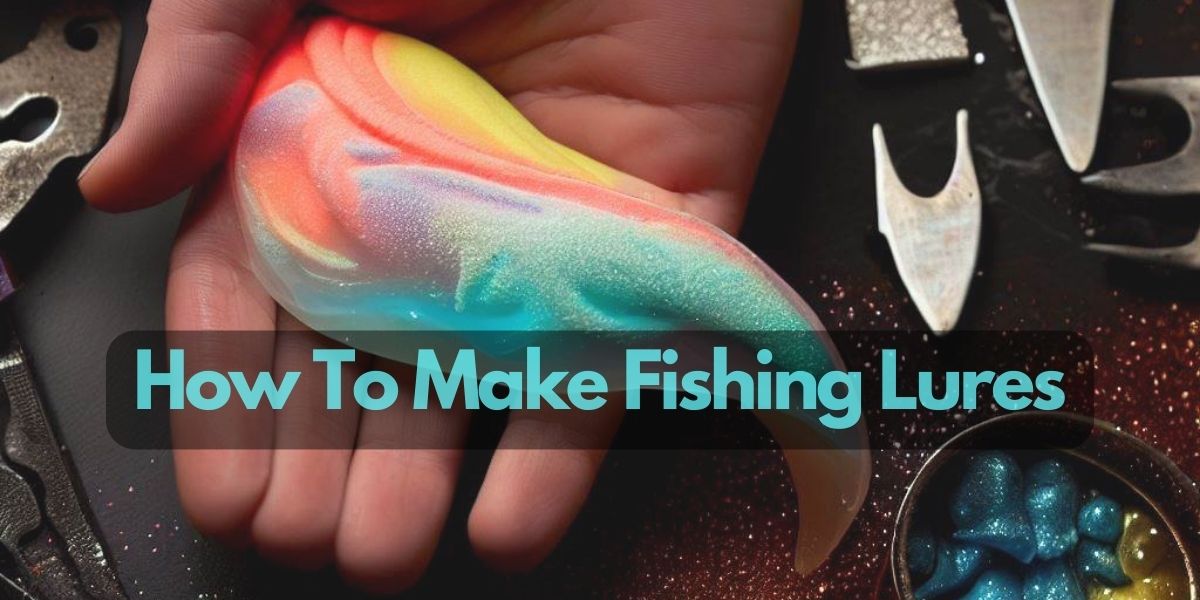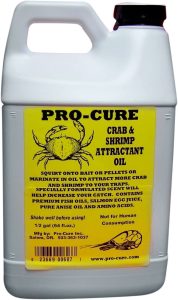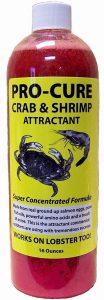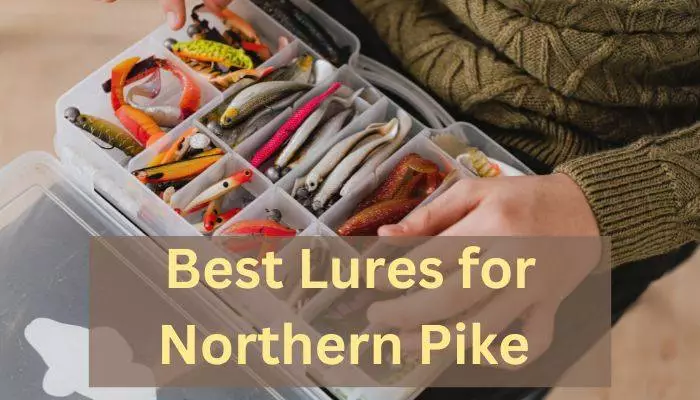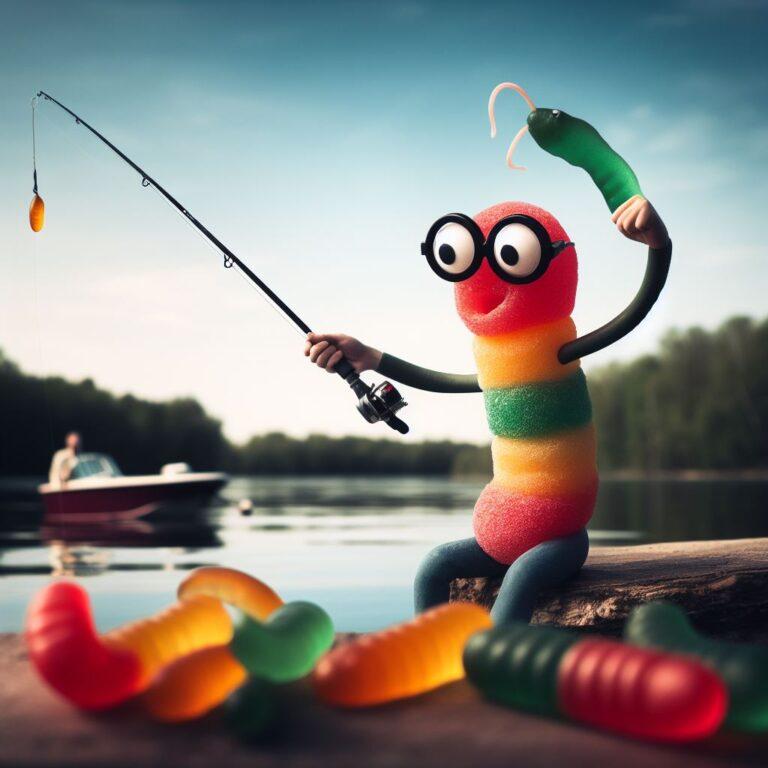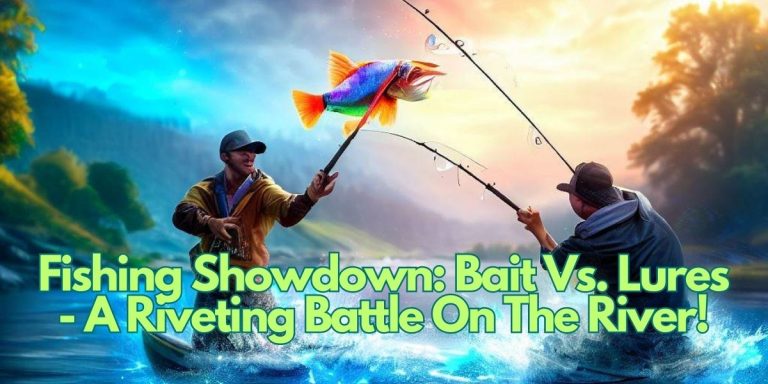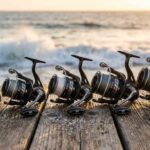Crab fishing can be a challenging task. It takes so much skill, patience, and strategy to catch your desired crabs successfully.
If you are having trouble catching those precious crustaceans of yours how do you make adjustments?
Do you need to have a real-life crab-fishing fight between yourself or someone else?
The more difficult it becomes for your crabs’ survival and happiness, isn’t the less time we all survive. It makes us lose our minds.
This article offers expert tips on how best to improve your chances of catching those precious crustaceans by examining bait picks to make fishing a success story.
Our Top 10 Picks
- chicken
- anchovies
- fish heads
- protein sources
- razor clams
- mink carcasses
- turkey neck
- salmon heads
- cat/dog food
- eels
10 Best Crab Baits
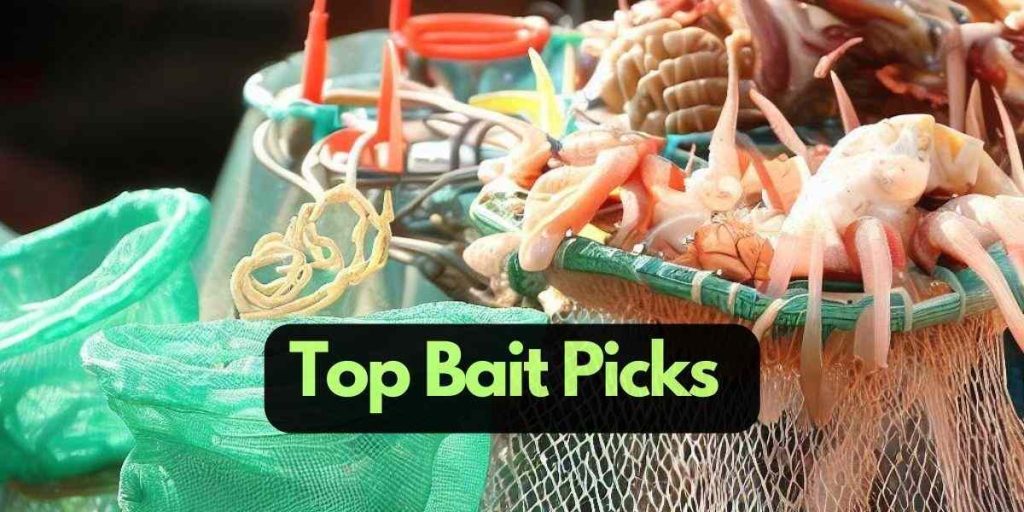
To improve your crabbing success, you must know the best baits.
Chicken, anchovies, and fish heads are all great protein sources that crabs love. Razor clams, mink carcasses, turkey necks, salmon heads, cat/dog food, and eels can also be effective bait.
Knowing which bait to use can make all the difference in catching those delicious crabs.
Recommended Best Crab Baits:
1. Chicken
You’ll want to bring some chicken as bait to catch more crabs. Not only is chicken readily available and affordable, but it’s also a delicious and versatile bait option.
Regarding cooking techniques, you can use raw or cooked chicken, depending on your preference. Some crabbers swear by boiling chicken before using it as bait, while others prefer raw chicken to entice crabs with its natural scent.
Aside from being a tasty treat for crabs, chicken also offers some nutritional benefits. It’s a good source of protein and contains essential amino acids that can help keep crabs healthy.
To amp up the flavor of your chicken bait, you can experiment with different seasoning options. Garlic, paprika, and Old Bay seasoning are popular choices that add extra oomph to your bait.
When storing chicken as bait, please keep it in an airtight container in the fridge or freezer to prevent spoilage.
With chicken as your bait, you’ll be well on your way to a successful crabbing trip. Now, let’s move on to the next bait option: anchovies.
2. Anchovies
The great thing about anchovies is that they’re a versatile bait option, and it’s easy to experiment with different cooking techniques to find what works best for you.
If you’re looking for anchovy alternatives, sardines and herring can also be effective.
When preparing anchovies, remove the bones and cut them into small pieces. This will help attract the crabs and make it easier for them to grab onto the bait.
When it comes to anchovy storage, it’s essential to keep them in a cool and dry place to prevent spoilage.
If you’re looking for new anchovy recipes, try marinating them in olive oil and garlic before using them as bait.
One of the benefits of using anchovies as bait is that they’re relatively inexpensive and can be found at most grocery stores.
As you move on to the next section about fish heads, remember that they’re another excellent option for crabbing. However, they can be messier and more challenging to handle than anchovies.
3. Fish heads
Using fish heads as bait for crabbing can be a more challenging option, but it can also provide a unique and rewarding experience for those willing to try.
First and foremost, preparing your fish headbait is essential. Remove gills, eyes, and internal organs, as these can deter crabs from approaching your trap.
You can also cut the head into smaller pieces to make it easier for crabs to access the meat.
One of the benefits of using fish heads as bait is that they’re an alternative protein source for crabs. While anchovies are a popular and effective bait, using fish heads can provide a different scent and texture to attract a wider variety of crab species.
Additionally, if you want to switch up your bait options, chicken can be an excellent alternative to fish heads.
To get the most out of your bait, try placing it in a mesh bag or cheesecloth to prevent it from falling apart and to make it easier to remove from your trap. With these tips, you’ll be on your way to a successful crabbing trip.
When it comes to selecting the best protein sources for crabbing, there are a variety of options to choose from. In addition to fish heads and chicken, squid, and shrimp can also be effective baits.
Each has its unique scent and texture, so experimenting with different options may be worthwhile to see what works best for you.
4. Protein sources
To attract a wider variety of crab species, try experimenting with different protein sources like squid or shrimp instead of relying on fish heads or chicken.
Crab protein is essential for its growth and maintenance, and other protein sources can provide varying levels of nutritional value.
Squid, for example, is high in protein and contains taurine, which is important for crab metabolism. Shrimp is also a great alternative source of protein and can be used in various cooking methods, such as boiling or steaming.
When selecting protein sources for crabbing, consider sustainable options that won’t harm the ecosystem. Make sure to check local regulations and restrictions on harvesting certain species of seafood. Additionally, be mindful of your cooking methods, as overcooking can reduce the nutritional value of the protein source.
With some experimentation, you can find the perfect protein source to attract the crabs in your area and improve your overall crabbing success.
To further enhance your crabbing success, consider using razor clams as bait. These clams are a favorite among crab species and can be found along sandy beaches.
5. Razor clams
Now that you’ve learned about the benefits of using protein sources as bait, it’s time to focus on the specific type of bait that can significantly increase your chances of catching more crabs.
Introducing razor clams, a popular choice among crabbers due to their effectiveness and versatility.
Razor clams are excellent bait due to their strong scent and rugged texture, which can withstand the tug of crabs and attract them to your trap. Catching these clams can be done by looking for them in the sand during low tide or using a clam gun.
Once you have enough, you can use them whole or cut them into smaller pieces to fit your trap. Aside from their effectiveness as bait, razor clams also have various cooking ideas and nutritional value.
They can be prepared in various ways, such as steaming, grilling, or frying, and are rich in protein, vitamins, and minerals.
Furthermore, it’s important to practice sustainability when harvesting razor clams by following local regulations and only taking what you need.
Now, let’s move on to the next bait pick that can further improve your crabbing success – mink carcasses.
6. Mink carcasses
Oh, you thought razor clams were the only odd bait pick? Enter mink carcasses – the not-so-pleasant yet surprisingly effective option for luring in those crustaceans.
Using natural baits like mink carcasses provides an alternative protein source that can help improve your crabbing success.
However, ethical considerations come with using this type of bait. When using mink carcasses as bait, it’s important to consider wildlife management and sustainability practices.
While it may seem unorthodox, using mink carcasses is common among experienced crabbers. Mink carcasses are natural bait easily obtained from wildlife control agencies or fur farms.
This alternative protein source is effective because it releases a strong smell that attracts crabs to your trap.
Just make sure to dispose of the carcass properly after use and always follow ethical guidelines for wildlife management.
Let’s move on to the next bait pick – turkey necks.
7. Turkey neck
Turkey (neck) is a surprisingly effective and easily accessible bait for luring those delicious crustaceans. Not only is turkey neck readily available at your local grocery store, but it also provides various benefits as a crab bait.
Here are a few reasons why turkey neck is a great option:
- Cost-effective: Turkey neck is cheaper than other crab bait options, such as chicken or fish.
- Long-lasting: The rugged texture of the turkey neck allows it to stay on your crab trap longer, increasing your chances of catching more crabs.
- Seasonality: Turkey neck is available year-round, making it a convenient option for all seasons.
- Cooking with turkey neck: After using it as bait, you can cook with the neck and make delicious soups or stews.
If you’re not sold on turkey neck as a bait option, there are alternatives such as chicken parts or fish heads. However, try turkey neck and see how it improves your crabbing success.
Speaking of other bait options, have you considered using salmon heads?
8. Salmon heads
If you’re looking for a bait option that’s both tasty for crabs and delicious for humans, salmon heads may be the way to go. Not only do they have a high success rate for catching crabs, but they also offer a variety of benefits.
Salmon heads are a sustainable option, as commercial fishermen often discard them, making them an eco-friendly choice. Additionally, they are packed with nutritional value, containing high levels of protein and omega-3 fatty acids.
When preparing salmon heads for crabbing, remember a few tips. First, chop the heads into smaller pieces to make them easier for crabs to grab onto. You can also score the skin of the salmon head to release more scent.
Another option is to boil the heads in salt water for 10-15 minutes to enhance their scent. After using them for crabbing, don’t throw the heads away! They can be used as a tasty treat for cats and dogs, providing them with similar nutritional benefits as they do for crabs.
Transitioning into the next section, cat and dog food can also be used as an alternative bait option for crabbing.
9. Cat/dog food
Using cat and dog food as bait for crabbing can be a creative and convenient option for those with pets at home. Here are some benefits of using pet food as bait:
- Versatile: Cat and dog food comes in various flavors and textures, allowing you to experiment with what works best for crabbing in your area.
- Cost-effective: Pet food is usually cheaper and readily available at most grocery stores than other bait options.
- Easy to prepare: Scoop the desired pet food into a mesh bag or cheesecloth and tie it securely to your crab trap.
- Nutritious: Pet food is usually made with high-quality ingredients and can provide crabs with a good source of protein and other nutrients.
When using cat or dog food as bait, it’s essential to remember that some brands may work better than others. Look for options with a strong odor and easy for crabs to smell.
Also, avoid using flavored options containing artificial additives or preservatives that could harm the crabs. Experiment with different brands to find what works best for you.
Moving on to the next topic, eels can also be a great bait option for crabbing.
10. Eels
Consider using eels, as they can be an effective and enticing bait option for catching crabs. Eels are readily available in many areas and can be caught using various methods, such as traps or fishing with a hook and line.
Once you’ve obtained your eels, preparing them for use as bait is important. One method is to cut the eel into small pieces and secure them to your crabbing line using thread or elastic bands.
Another method is using the whole eel as bait, either by hooking it through the mouth or inserting the hook into the body and the tail.
Eels are an effective bait for crabs because they release a strong scent that attracts the crabs to your line. In addition, eels are a natural food source for crabs, making them a highly effective bait option.
However, alternative baits, such as chicken or turkey necks, fish heads, or cat or dog food, can be used if eels aren’t readily available in your area.
It’s also essential to consider the conservation efforts for eels, as they’re often overfished and currently face population declines in many areas. With that said, using eels as bait can be a successful way to improve your crabbing success.
As you move on to the next section about “bait holders,” it’s important to remember the type of bait you’re using and how it can best be secured to your line.
See also: How to Catch Crabs at the Beach?
Bait Holders
Using bait holders can make a big difference in improving your crabbing success. Bait holders like Skylety crab trap bait bags and SF mesh bait bags with rubber lockers are designed to keep your bait secure and prevent it from falling out of your trap or floating away in the water.
The Skylety bait bags are made of durable nylon mesh with a drawstring closure, while the SF mesh bags feature a rubber locker to keep the bait in place.
Skylety crab trap bait bags
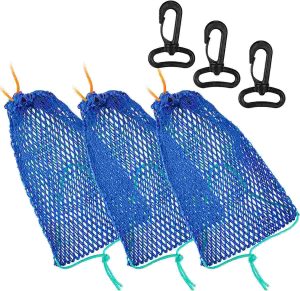
Are you looking for an effective way to lure crabs into your trap? Skylety’s crab trap bait bags are a must-try.
These bait bags are made of high-quality mesh material, allowing water to flow easily your bait fresh and alive longer. The durable construction ensures that the bags can withstand the harsh conditions of the ocean and last for multiple uses.
Skylety’s bait bags have superior scent retention than other alternative options, which is crucial for attracting crabs to your trap. The design features a drawstring closure that securely keeps the bait inside the bag, preventing it from falling out or getting lost.
These bait bags have proven to be very effective in improving crabbing success rates.
Let’s move on to the next section about the sf mesh bait bags with rubber lockers.
SF mesh bait bags with rubber locker
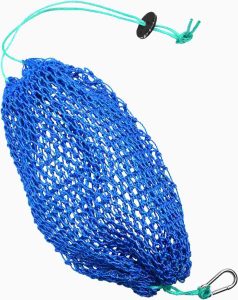
If you’re looking for an alternative design to the Skylety crab trap bait bags, the SF mesh bait bags with rubber lockers are a great option. These bait bags are made with high-quality materials that ensure durability benefits, making them a smart investment for any avid crabber.
The rubber locker ensures your bait stays secure and won’t fall out, even in rough waters. Regarding brand comparisons, SF mesh bait bags are popular among crabbers. Their sturdy construction and secure lock make them a reliable bait storage option.
Additionally, these bags offer customization options, allowing you to personalize and tailor your crabbing setup to your needs.
SF mesh bait bags with rubber lockers are great for crabbing enthusiasts. They offer durability benefits, alternative designs, brand comparisons, and bait storage solutions to enhance your crabbing success.
With these bags, you’ll have the peace of mind of knowing that your bait is secure and ready to attract crustaceans. So, let’s move on to the next section and discuss some tips for successful crabbing.
Tips for Successful Crabbing
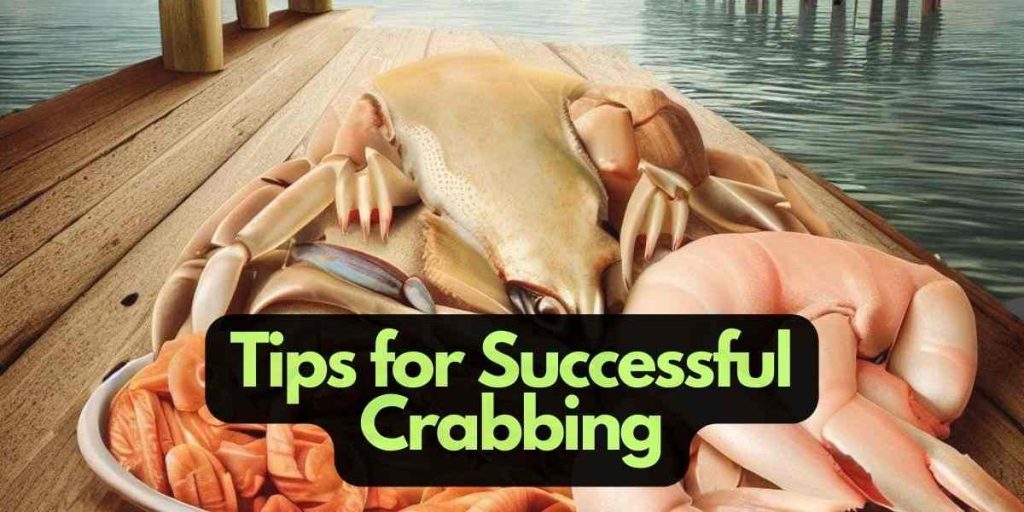
To make the most of your crabbing experience, you’ll need to know some tips and tricks to increase your chances of catching those elusive crustaceans. It’s essential to keep your eyes peeled and be patient as the early bird catches the worm.
Crabbing techniques vary depending on the location and equipment needed, but generally, you’ll want to drop your bait near structures like rocks or piers where crabs like to hide. Placing multiple traps in different locations can also increase your chances of success.
Before heading out, research the best locations to crab in your area and obtain any necessary regulations and permits. Safety measures should also be taken seriously, including wearing appropriate clothing and footwear and being aware of the weather and tide conditions.
With these tips in mind, you’ll be on your way to catching some tasty crabs for your next meal.
Moving on to the crabbing industry, the demand for crab continues to grow, making it an essential part of the seafood market.
Crabbing Industry
Learning about the crabbing industry is essential if you’re interested in crabbing. Crabbing is a popular activity for recreational and commercial purposes, and it’s essential to understand the regulations, techniques, equipment, and locations involved in this industry.
Whether you’re a beginner or an expert crabber, following crabbing safety tips is crucial to avoid any risks or accidents. Crabbing techniques can vary depending on the type of crab you’re targeting and your location. Some popular methods include crab pots, crabbing with handlines, or dip nets.
You’ll also need the right crabbing equipment, such as crab traps, bait, gloves, and a crab gauge to measure the size of the crabs. It’s also essential to research your area’s crabbing locations and ensure you have the necessary licenses and permits to crab legally.
Finally, be aware of crabbing regulations in your place, such as size and catch limits, and follow them to avoid any fines or penalties.
With the proper knowledge and preparation, you can have a successful and enjoyable crabbing experience. Here are some tips to follow:
- Research the best crabbing techniques for the crab you want to catch.
- Invest in the right crabbing equipment, such as crab pots and bait.
- Check the regulations and obtain the necessary licenses and permits for crabbing in your area.
- Follow crabbing safety tips to avoid any risks or accidents.
Now that you better understand the crabbing industry, it’s time to learn about recommended attractants to increase your crabbing success.
Recommended Attractants
Discover how attractants can enhance your crabbing experience and yield a bountiful harvest. Attractants are substances that lure crabs toward your bait, increasing your chances of catching them.
Various types of attractants, including natural and synthetic options, are available in the market. Natural attractants such as fish carcasses, chicken necks, and eel skins have been used for centuries to attract crabs.
On the other hand, synthetic attractants such as oils, sprays, and pastes are artificial and designed to mimic the scent of natural prey.
Effective combinations of attractants can significantly increase your chances of catching crabs. While natural attractants are potent on their own, they can be enhanced by adding synthetic options.
DIY options such as mixing fish oil and garlic powder or creating your crab scent using a blend of ingredients can also be effective.
If you prefer commercial products, various options, such as crab attractant sprays, pastes, and oils, are available.
When choosing an attractant, consider factors such as water temperature, crab species, and seasonality to determine the most effective options for your area.
Conclusion
Ready to reel in your crabbing success? You’ve worked hard to develop the perfect baits for your next crabbing adventure, and now it’s time to put them into action!
With these top picks under your belt, you’ll be well-prepared to tackle even the most elusive species. The thrill of reeling in a monster catch will drive you forward, pushing you to become an expert crabber.
By mastering these bait techniques, not only will your catch rates skyrocket but also so will your confidence and sense of accomplishment.
This newfound expertise will translate into unforgettable memories with friends and family as you relive the thrill of a successful day on the water.
Don’t let another day pass without putting these bait picks into action! Dive headfirst into improving your crabbing success story today!
You may also like 📖
-
10 Best Spinning Reel for Trout in 2023 (Buying Guide Review)
-
10 Best Saltwater Spinning Reels Under $100 – Ultimate Guide
-
10 Best River Trout Fishing Rods For 2023 Season: Expert Buying Guide
-
Can Baitcasters Improve Casting Accuracy More Than Spinning Rods?
-
What Length Spinning Rods Do You Need: (Finding the Perfect Fit)
-
How to Spool a Spinning Reel Like a Pro – Conquer Line Twist and Cast Like a Champion

